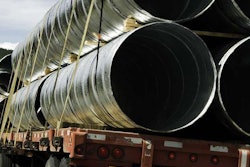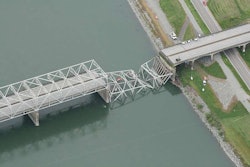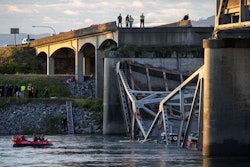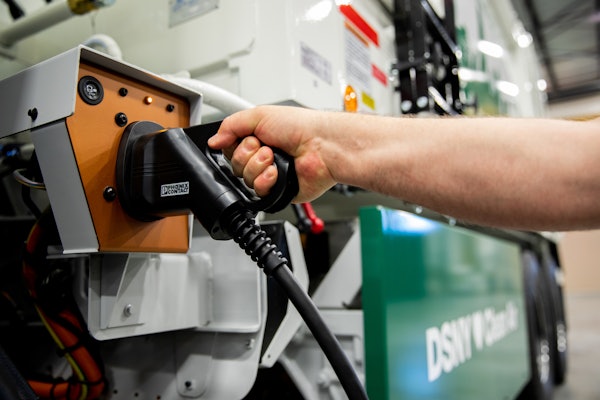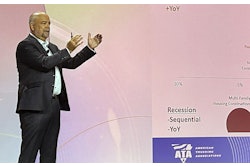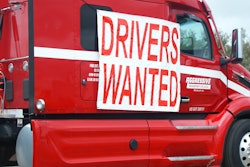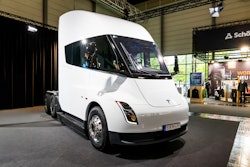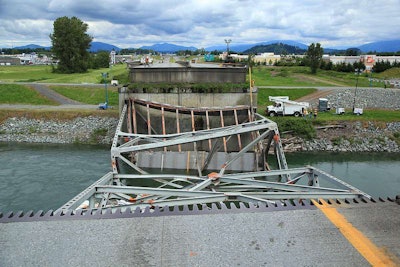 The I-5 bridge over the Skagit River in Washington after it collapse last May.
The I-5 bridge over the Skagit River in Washington after it collapse last May.The National Transportation Safety Board blames a “series of deficiencies” on the events that led to a truck with an oversized load striking a sway brace on the bridge last May and causing it to collapse into the Skagit River, according to a soon-to-be-released report by NTSB.
Negligence by the truck’s pilot vehicle, bad route planning by the carrier, an inadequate permitting processes in the state of Washington and the lack of low-clearance warning signs on the bridge all led to the truck striking the bridge and its subsequent collapse.
NTSB says the truck’s pilot vehicle driver had placed five calls on her mobile phone in the 30 minutes preceding the bridge strike, and she was on a call when the truck struck the bridge, NTSB says.
The pilot vehicle was equipped with a height pole, and an off-duty truck driver said he saw the height pole hit the bridge in four or five places when it crossed. However, NTSB says it was unable to determine whether the pole actually hit the bridge, and the pilot driver said she didn’t notice the pole making contact.
But the use of her phone was a distraction and “diminished her ability to recognize whether” the pole did hit the bridge, NTSB says.
The trucking company operating the truck also did not check the route or bridge clearances prior to the crash,either, NTSB says, even though it had obtained a permit for the oversized load. Had the truck been in the left lane on the bridge instead of the right, it would not have made contact with the bridge, NTSB concluded.
A lack of warning signage on the bridge was also a problem, NTSB says, as the Washington Department of Transportation had no signs on the bridge to warn truck drivers of the bridge’s height restrictions. Washington has 22 other bridges on its Interstate system similar to the Skagit River bridge, NTSB says, and none of them have low-clearance warnings, either, or direct oversize load drivers to the left lane, where clearance is higher.
Lastly, NTSB says WDOT’s permitting process needs to be changed, saying the state needs a better review process for carriers obtaining oversize load permits.
NTSB has issued 18 recommendations to both federal and state departments to try to avoid a similar issue from reoccurring, including prohibiting nonemergency use of portable electronics by pilot car drivers and developing better signage requirements.
The bridge collapse last year occurred hen a 2010 Kenworth towing a 1997 Aspen flatbed with a casing shed struck the bridge in the southbound far right lane on I-5. The bridge collapsed after the truck had crossed. Though some cars fell into the river, no one was injured.




